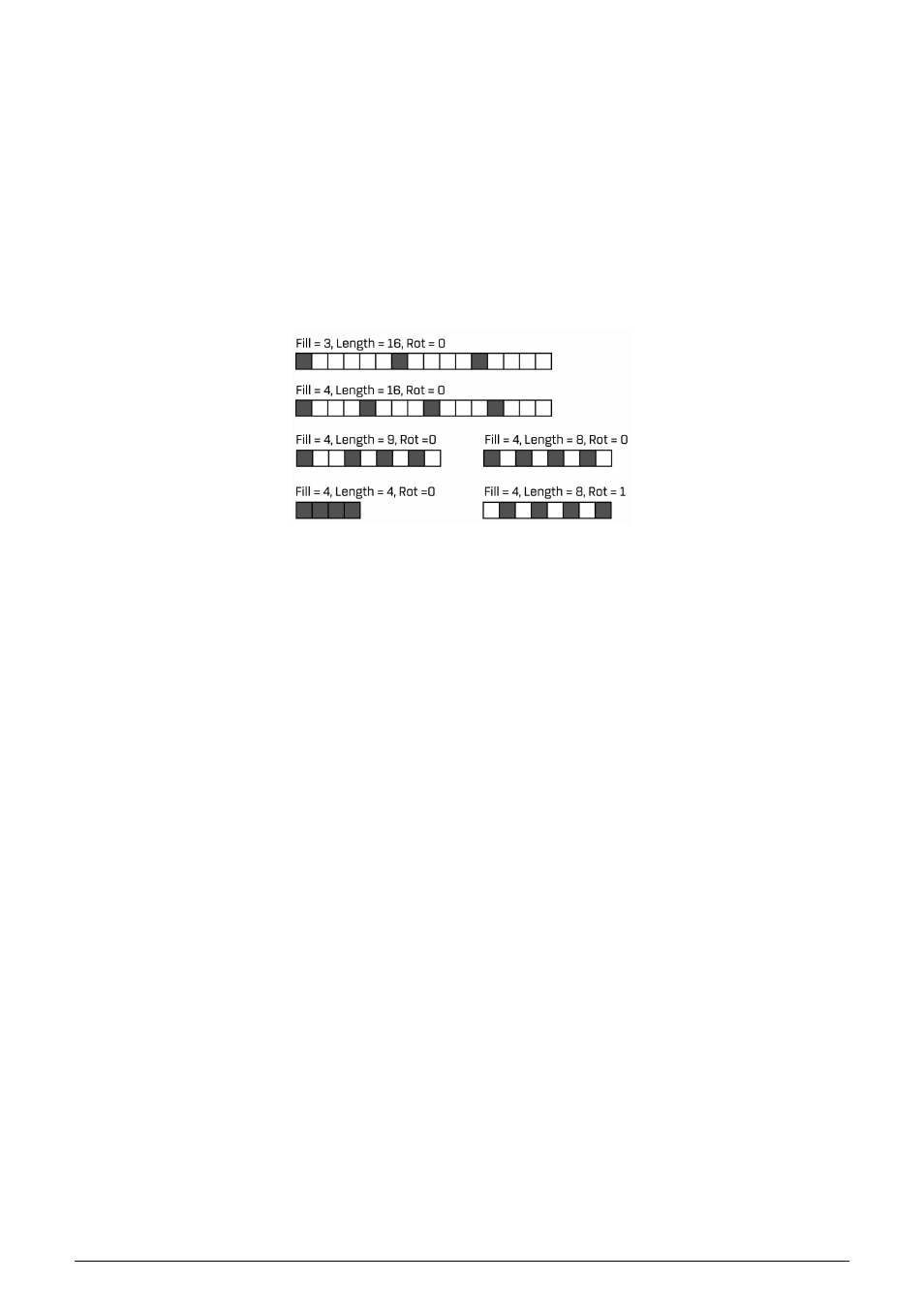Euclidean rhythms – Arturia KeyStep Pro Keyboard with Advanced Sequencer and Arpeggiator User Manual
Page 113

5.4.4.3. Euclidean Rhythms
There are times when you notice that you're stuck in the same routine when creating
rhythms: for example, every sequence you create is 16 steps long with every fourth step
active. It has become your default setting and you find it difficult to appreciate anything that
sounds different. If that is the case, you may want to explore Euclidean rhythms.
A Euclidian rhythm is built using three parameters: length (step length), density (step fill) and
rotation of the sequence. The simplest example is a sequence of 16 steps with four beats.
When you distribute these beats evenly over the sixteen steps, the result is the rhythm most
often heard in western music: four 4-step bars, each with a note on the first step of the bar.
But there's an alternative: by combining different step lengths and step fills, a great number
of original rhythms can be created. The diagram below shows a few examples:
Many of these patterns are common in African and South American music.
The next phase is to explore advanced rhythms by applying pattern rotation, randomness
and swing. Euclidean patterns are notated in the format E(X, Y), where X is the number of
active steps in the pattern and Y is the length of the Pattern. For example: E(4, 7) = [Ч · Ч · Ч · Ч]
is a famous Bulgarian dance rhythm. E(2, 5) = [Ч · Ч · · ] is a rhythm found in Greece, Namibia,
Rwanda and Central Africa.
Setting Pattern Rotation
By shifting a Pattern one position to the right with the KeyStep Pro's nudge function ('Shift'
+ Nudge>), you can change the overall character of the rhythm. If you start the above
rhythm on the second step, as in [Ч · · Ч · ], it suddenly becomes a rhythm often found
in Central Africa, Bulgaria, Turkey, Turkestan and Norway. Each additional Nudge> will
generate another unique rhythm.
Arturia - User Manual Keystep Pro - Making Tracks
107
